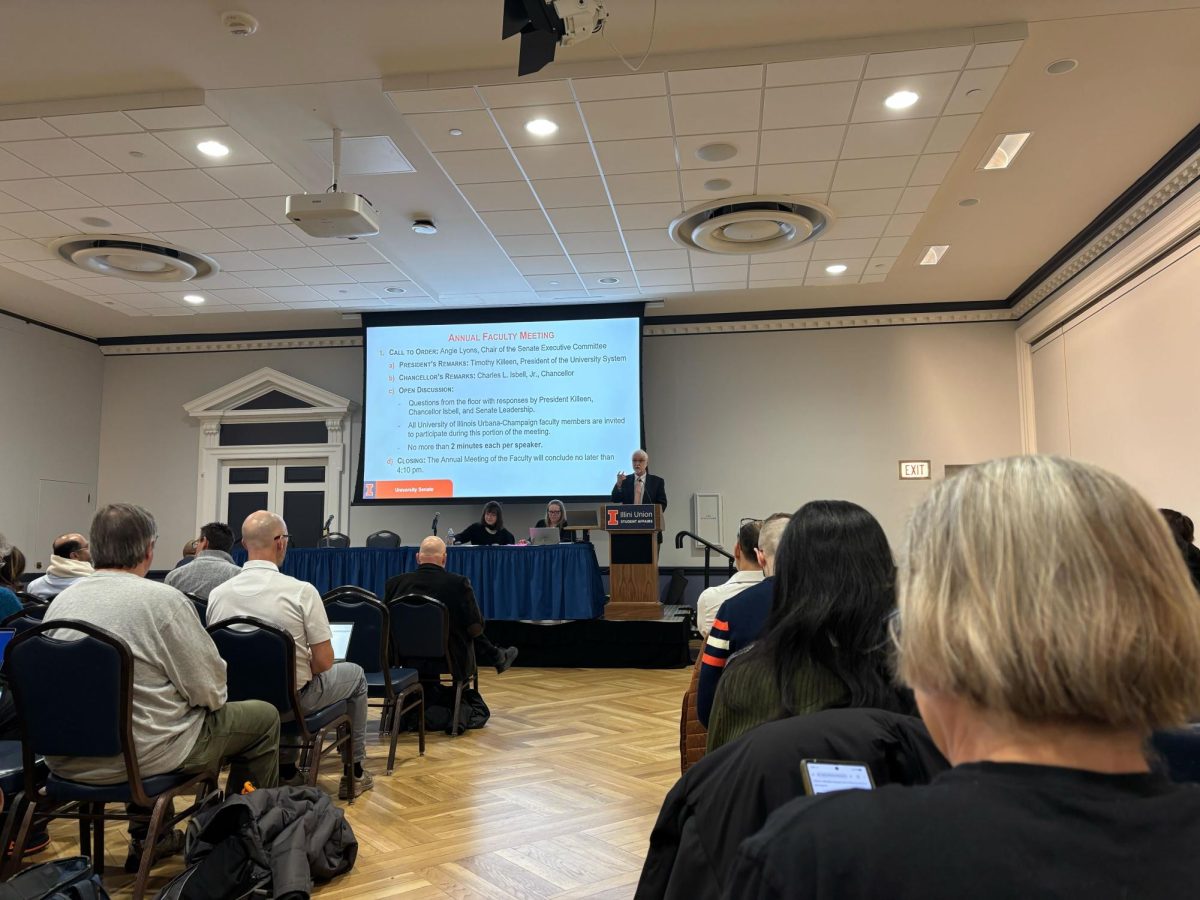The Illinois Simulator Laboratory is one of the most innovative places on campus, with several simulators that enable researchers to conduct experiments testing human perception and cognitive abilities. The lab also allows researchers to create virtual environments in which people can interact with abstract concepts.
Several projects are underway at the lab, such as a virtual surgery project that allows veterinary students to perform surgery virtually before doing so on an actual animal, said lab director Hank Kaczmarski. The lab is part of the Beckman Institute but has been located across the street from the Vet Med campus since March.
“We have micro-balloons that simulate actual surgical force on the surgeon finger,” Kaczmarski said. “The idea here is to reduce the amount of practice surgeries students perform.”
The lab is also home to the world’s first room-sized immersive environment, known as the CAVE — a three-wall and floor-projection space first constructed in 1995. The room has been used for many experiments such as replicating pedestrian behavior.
Kaczmarski said the CAVE was recently used for an experiment conducted by Art Kramer, professor of psychology at the University, to determine why people are distracted and inadvertently walk in front of buses.
Get The Daily Illini in your inbox!
“We found out when a person is engaged in a very personal cell phone conversion, the mental attention required takes away from visual attention needed,” he said.
One research project underway in the CAVE is another experiment focusing on distractions that children between the ages of 7-9 face when crossing the street.
Post-doctoral researchers and professors typically design the experiments, which are then run by undergraduate and graduate students.
The lab also has contracts to design projects with outside entities such as the Department of Homeland Security and the U.S. Army Corps of Engineers.
Perhaps one of the most unique things at the lab is the CUBE, a 3-D visualization chamber. The six surfaces of the cube, including the floor, are acrylic panels (measuring three meters by three meters) coated with a dark rear-projection material. To see the visualizations, users must wear a $1,000 pair of 3-D glasses.
Some visualizations include the showing of minimal surface tension inversion of a sphere. There are also visualizations that have been created that could be used by urban planners to simulate the impacts of light pollution and city growth.
“I make visible what is otherwise hidden,” said George Francis, a professor in mathematics who has worked on creating mathematical visualizations so students can picture complex concepts.
“You can freeze the motion and look at the singularities,” he said.
Francis is also working on creating scripting languages that are simpler than the average language, such as Python or C++, so students without a computer science or engineering background can create programs.
Stuart Levy, a programmer at the National Center for Supercomputing Applications and self-professed amateur astronomer, has worked on creating 3-D visuals of the galaxy and stars using the CAVE.
“We take science and create beautiful visualizations so the public can appreciate the science,” Levy said.





